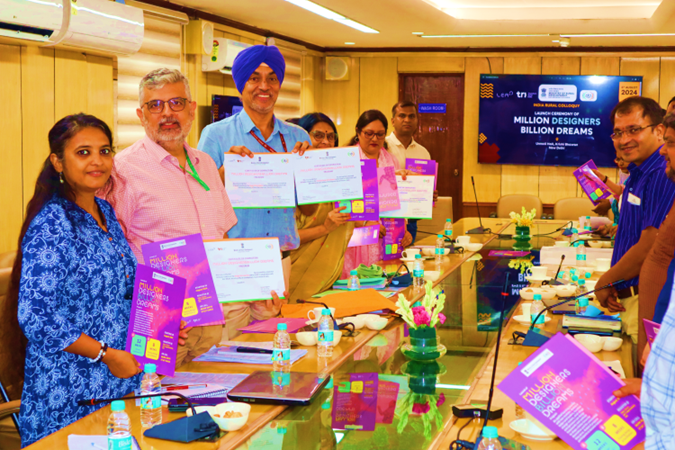Context:
The Deendayal Antyodaya Yojana–National Rural Livelihoods Mission (DAY-NRLM) recently announced the launch of the “Million Designers, Billion Dreams initiative.
More on the news
- It is an innovative program aimed at empowering individuals by teaching them systems design skills.
- It focuses on rural leaders, frontline change makers, and village entrepreneurs, providing them with the expertise needed to develop impactful and scalable solutions.
- This initiative is led by LEAP and in collaboration with the DAY-NRLM.
The program’s primary objectives are
- To enhance participants’ proficiency in design frameworks to drive systems change.
- To promote collaboration among diverse stakeholders to address complex challenges.
- To foster confidence and agency to shape better futures through creativity and ownership.
LEAP (Leadership for Academics Program):
- LEAP is a catalyst organization that emerged from the multidisciplinary work developed in India by the Design Laboratory at the Harvard T.H. Chan School of Public Health (D-Lab) and the Transform Rural India Foundation (TRIF), with seed investment provided by the Bill and Melinda Gates Foundation (BMGF).
Deendayal Antyodaya Yojana-National Rural Livelihood Mission (DAY-NRLM)
- It is a flagship poverty alleviation program implemented by the Ministry of Rural Development, Government of India.
- National Rural Livelihood Mission (NRLM) was launched in 2010 as a mission-mode scheme by restructuring the erstwhile Swarnajayanti Grameen Swarojgar Yojana (SGSY).
- In 2016, the program was renamed Deendayal Antyodaya Yojana – National Rural Livelihood Mission (DAY-NRLM).
- The central and state governments jointly fund this centrally sponsored scheme.
- It promotes building strong institutions such as Self-Help Groups (SHGs) for the poor, particularly women, and enabling these institutions to access a range of financial services and livelihoods.
- The Mission consists of four components, viz., (i) social mobilization, community institution, and capacity building; (ii) financial inclusion; (iii) livelihood promotion; and (iv) convergence.

